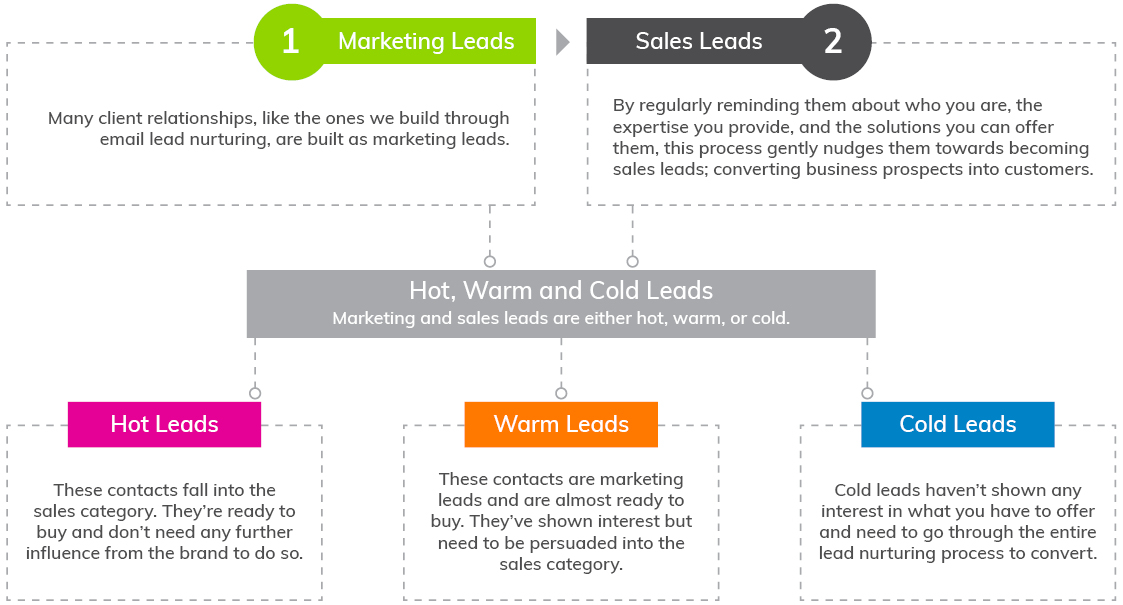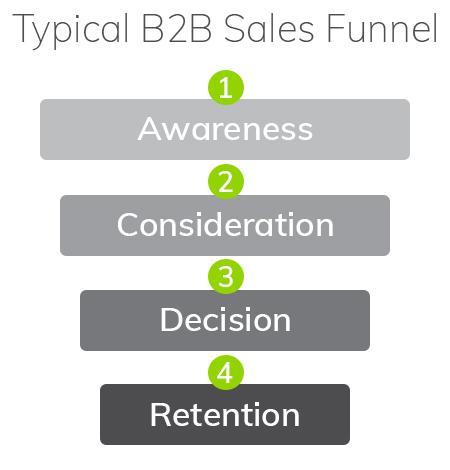Lead nurturing is a way for businesses to give leads what they need at every stage of the sales funnel so they’re more likely to convert to customers – and it’s invaluable when coupled with email marketing. Through effective content curation throughout the sales funnel, businesses can maximize the relationship with every lead. How can you acquire and retain B2B customers with lead nurturing? Find out more…

Why is Lead Nurturing Important?
With so many products on the market today, it makes sense that consumers don’t always take buying decisions lightly. This goes for businesses too. When looking for new service providers, most businesses prefer to make educated decisions, taking time to research, compare, discuss, and analyze products or services before buying in.
Remember this if, say, a business opportunity drops off after connecting with you via an online form. The fact that a prospect doesn’t reply or sign up immediately doesn’t mean that they won’t. It may just mean that you need to put in a little more effort to get them over the finish line. And lead nurturing via email is the most effective way to do this.
According to a Demand Gen Report, lead nurturing emails get 4-10 times the response rate compared to individual email blasts. This is because they’re perfectly timed to go out when the prospect needs a nudge. Reaching out to them at that moment demonstrates that your business is standing by and ready to assist; increasing the client response rate, even if it is further down the line.
In a sentence, lead nurturing can be defined as: Connecting personally with potential clients to build trust at each phase of the sales funnel.
These prospective clients are often in limbo, surveying their options. By connecting with them and responding to their concerns, you’re more likely to turn them into future customers. In fact, even if your prospective clients don’t have concerns, connecting with them and speaking to their interests keeps your brand top of mind. But it requires some effort to get them there.

The B2B Buyer’s Journey
The buying journey has become harder as decision making for a typical B2B solution involves six to ten individuals; each with their own opinions and research information. Additionally, Gartner found that 77% of B2B buyers say that it was extremely difficult to commit to their latest purchase.
Understanding the buyer’s journey, and what your leads’ concerns are at each stage, helps to formulate a more effective content and communication strategy with them, going beyond standard expectations to get the attention of your leads. To do this, leads are usually broken into two categories:

Understanding the Sales Funnel
1. Awareness
The first step in the sales funnel is when a business prospect realizes that they have a problem. After searching online, your website is usually the first place where they learn more about how you can solve them. Many businesses also rely on word of mouth and positive recommendations to lead customers to their solutions.
Prospective customers often also use social media to learn more about the products and services they’re interested in. Here, they can get an overall feeling of the business and its products.
2. Consideration
Once a prospect has an idea of what they need to solve their problem, they enter a phase of consideration, where they weigh the pros and cons of their potential purchase. During this phase, email marketing is the most effective way of communicating with them. This is because it helps decision-makers to gather the information they need to address their questions and concerns.
Start sending your prospects content that impacts the consideration phase, like:
- Expert guides
- Case studies
- Podcasts
- Comparison videos
- Webinars
3. Decision
The decision phase is where prospective customers decide whether they want to invest in your product or service. But, even at this stage, potential customers are usually still assessing their findings. Tailoring content towards the value you can provide them will help them understand what makes you different from your competitors.

Here are some content types that work well in this phase:
- Whitepapers
- Reports
- Case studies
- Testimonials
- Product reviews
4. Retention
Once your business prospect becomes a customer, it’s essential to maintain contact with them via standard customer service and support. But, to have a real and lasting impact, you can take this a step further with automated email marketing.
By sharing thought leadership content, blogs, product demos, or even comparative data on similar solutions, you can maintain trust, upsell, or cross-sell your other products or solutions.
Final Thoughts
Many of your business leads won’t be ready to convert the moment they enter the sales funnel. But this doesn’t mean that they’re lost. Sometimes all they need is a little reassurance to move to the decision phase of the buying journey.
Help them get there by strategically nurturing leads through every stage of the buyer’s journey. This improves your chances of converting your customers into sales leads, all while building lasting relationships.












